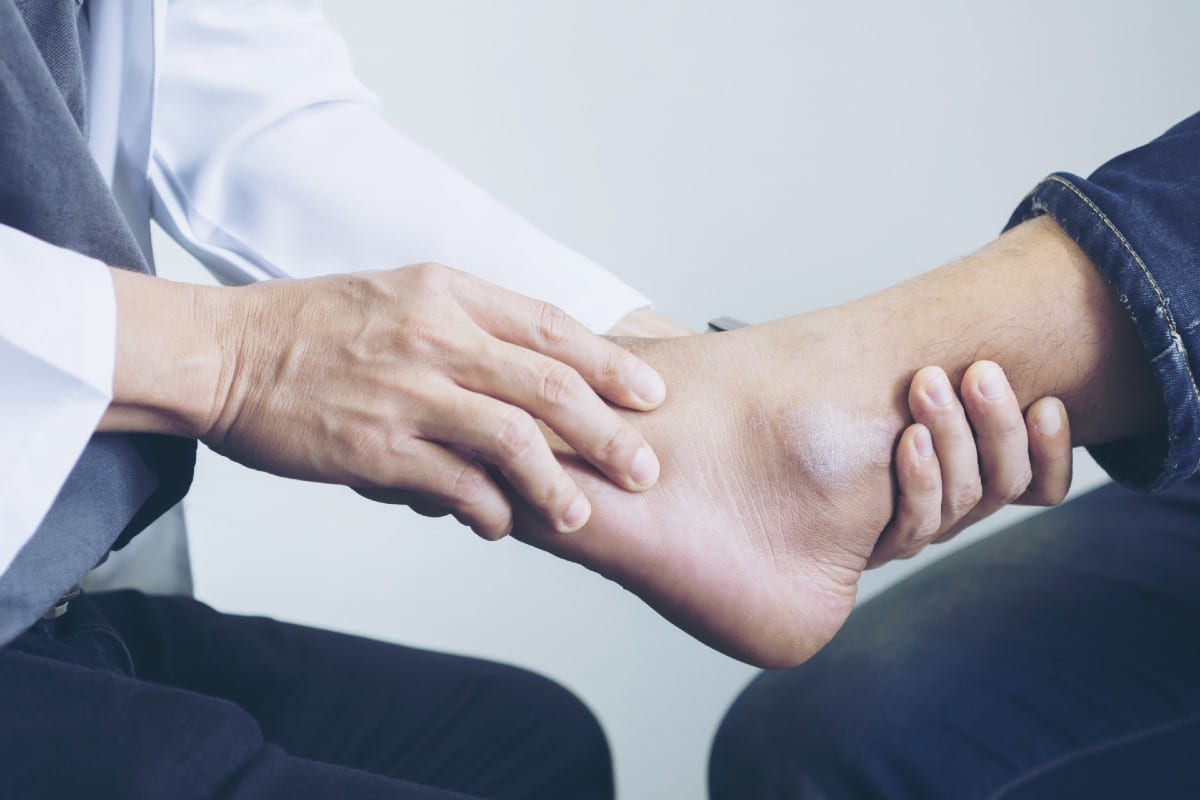Should I See a Doctor About My Sprained Ankle?
Yes. End of blog post. Call us now!
…
Okay, that’s probably not a completely satisfying answer. So we’ll elaborate a bit.
Sprained ankles are, without a doubt, one of the most common sports injuries faced by people of all ages and activity levels. And yes, it is true that, if your sprained ankle is a very mild one, there’s a good chance you’ll be able to manage your care at home.
Unfortunately, this gives a lot of people a false sense of security about their sprain. The truth is that there are some very good reasons you should always seek a professional evaluation right away, even if significant treatment interventions aren’t warranted in your case. Making sure your care is properly managed, even for a minor sprain, can help significantly reduce your risk of long-term problems.
First Step: Do You Even Have an Ankle Sprain?
Ankle sprains can affect one or more of the ligaments that support and stabilize your ankle joint, and can range from mild to severe. (These are traditionally identified as grade I through grade III, respectively).
If you’ve got a grade II or grade III sprain, you probably don’t need to read this blog post to have a pretty good idea of what happened. You’re probably already dealing with pretty severe pain, probably a decent amount of bruising, and moderate-to-severe looseness and instability in the ankle joint. Don’t kid yourself—this is a serious injury and you need medical attention as soon as possible.
Grade I sprains, on the other hand, can be more subtle. In this case, one or more of your ligaments has been overstretched, but not torn. There’s a decent chance you’ll still be able to put weight on your foot with only relatively mild discomfort—and you may well be tempted to do so, particularly if you have been told to “walk it off” or would rather not cut your workout short.
Don’t give in to this temptation! If you’re dealing with any pain, swelling, or tenderness after possibly twisting or hyperextending your ankle, immediately stop what you’re doing, start RICE therapy (rest, ice, compression, elevation), and give us a call.
The Long-Term Trouble with Ankle Sprains
Do you know what the single biggest risk factor is for getting an ankle sprain? It’s whether you’ve already had an ankle sprain in the past.
As we said, relatively mild ankle sprains can often be treated successfully at home. This can be achieved through RICE and, when appropriate, rehabbing your ankle through physical therapy.
However, it is extremely important that the proper steps are taken in the proper order. You definitely don’t want to go too hard too soon and risk re-aggravating your injury. Nor do you want to leave your rehab incomplete, resulting in an ankle that isn’t as strong or flexible as it was before the sprain.
If your ankle isn’t able to fully heal and recover, there is a greatly increased risk that the sprain will recur. And the more sprains you end up sustaining, the greater the likelihood that the joint will become chronically unstable and wobbly even after rehab. Eventually, your ankle may require a surgical repair to fix the damage.
Seek Expert Care for Your Ankle Sprain
We know how important your activities are to your overall happiness and wellbeing. The last thing we want to see is a relatively minor, one-time injury be your first step toward permanently reduced mobility and stability.
Never begin a treatment program for your ankle sprain without first consulting with a foot and ankle sports injury expert like Dr. Trent Timson. He has extensive experience diagnosing sprains and building personalized treatment plans that take the severity of your injury and your lifestyle goals into account.
Our office is equipped with digital X-ray and diagnostic ultrasound to aid in evaluation, as well as advanced treatments such as MLS laser therapy that can rapidly decrease your pain and stimulate accelerated healing in the affected ligaments—meaning you can return sooner to your activities than you otherwise could, all without increasing your risk of re-injury.
So if you suspect you might have a sprain, remember:
- Stop what you’re doing
- Start RICE therapy
- Give us a call. We’ll make every effort to see you as soon as possible, with same-day and next-day appointment slots usually available.
To schedule your appointment, call us today at (620) 241-3313.
© Community Foot Clinic of McPherson. All Rights Reserved.
Privacy Policy | Terms & Conditions
Web Design by CP Solutions
Marketed by VMD Services

